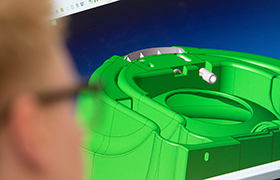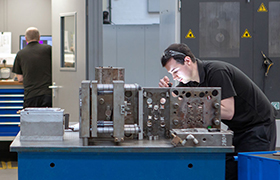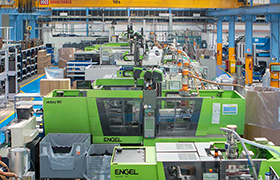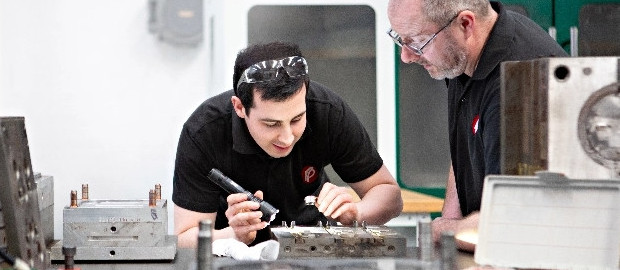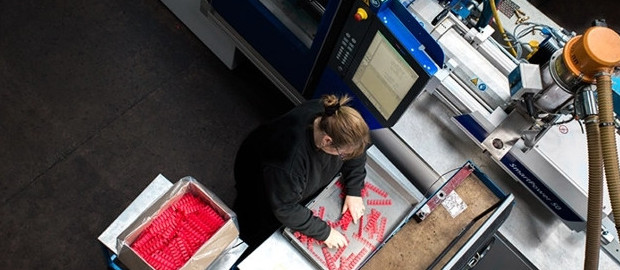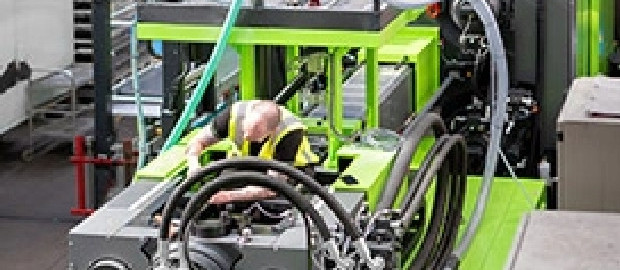RECYCLED & REPROCESSED PLASTICS
Increasingly, environmental concerns are playing a part in material selection. There are two routes to ‘greener’ plastics:
- Use of recycled and reprocessed polymers
- Use of bioplastics
Both of these approaches have been considered in Rutland Plastics newsletters in the past. However, it is worth revisiting these topics as it is an area that is constantly evolving.
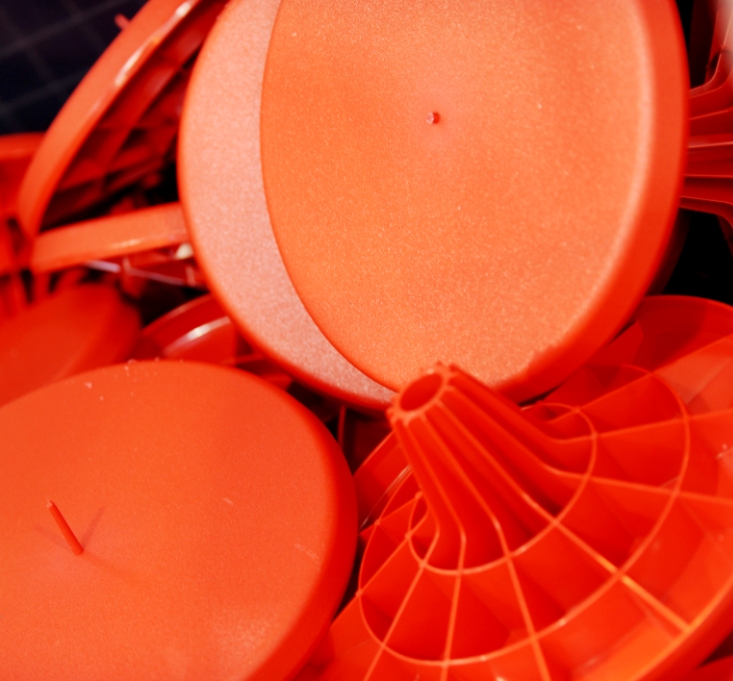
BACKGROUND
One of the features of thermoplastics is that any scrap can be ground up and reused. This can simply be the grinding up of sprues and a few scrap parts alongside the moulding machine, or much larger quantities of scrap or reclaimed plastics. In the case of the former the regrind may be fed straight back into production. Although the reground plastic will see some deterioration in certain properties, as it is being blended with virgin material at considerably less than 10% the overall effect is not discernible.
For larger quantities of scrap and reclaimed plastics the grinding up and resupply is generally carried out by specialist reprocessors.
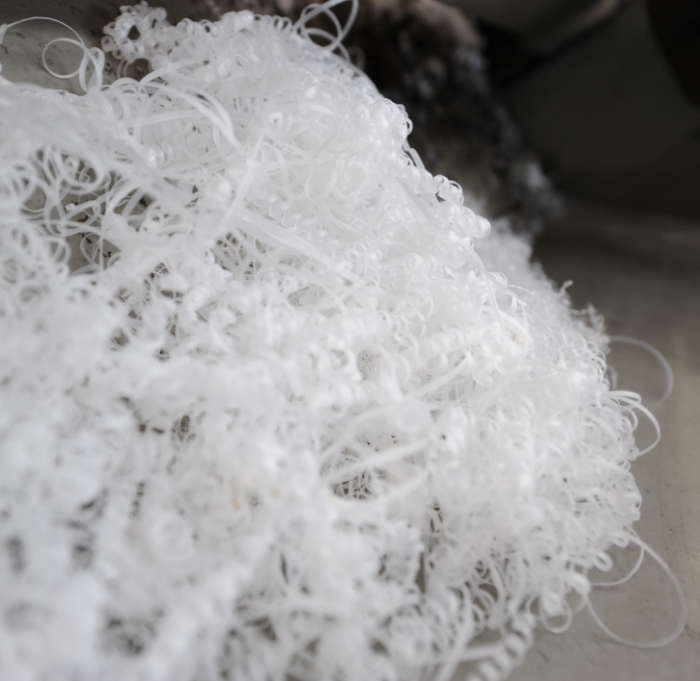
TYPES OF RECYCLED PLASTICS
The main driver for the specification of recycled plastics is cost rather than environmental concerns, although more companies are keen to portray a green image. In recent years polymer prices have risen dramatically making recycled plastics more attractive.
At the cheapest, most basic form, the material will vary in performance. This is because the processor will regrind whatever feedstock they can get of a suitable material, e.g. polypropylene, and compound it with a colour, usually black. Because a wide range of grades of polypropylene may be blended together, sometimes with some polyethylene included for good measure, the properties will vary dependent on which grades are used and in what proportion at any one time. This material will be used for the most basic of plastic products.
A step up from this is reprocessors that frequently have contracts with regular suppliers of plastic scrap which brings an element of consistency to the feedstock. With a bit of testing and blending the resulting reprocessed grades are much more consistent although it is fair to say that the properties offered tend to fall within a range rather than be more specific as with a virgin polymer.
The difficulty for the reprocessors is that when virgin materials are relatively cheap, although scrap availability may be good it is difficult for them to produce reprocessed polymers that offer a sufficient cost saving to generate demand. The other side of this particular coin is that when polymer prices are high demand for reprocessed polymers increases making it difficult to find sufficient feedstock to meet demand. The problem is worsened by plastics processors trying to find ways to reduce or re-use more of their scrap in-house rather than sell it to the recyclers.
The high polymer prices in recent years has led to ever more sophisticated methods of sorting through scrap and, increasingly, reclaim. Requirements to reclaim end of life vehicles and electrical products has resulted in large quantities of varied scrap materials. What is left after the metal has been reclaimed can be a mixture of plastic, wood, synthetic fibres, etc. Although many reprocessors continue to sort by hand this becomes an almost impossible task with this type of reclaim scrap. There are now automated processes that not only separate out all the different materials, but also segregate all the different polymers.
INCREASING SOPHISTICATION
Historically, end users have avoided reprocessed polymers for certain applications for the reasons outlined above – poorer performance, variability from batch to batch and poor surface finish. However, there are reprocessors now that use sophisticated laboratory testing and blending techniques to overcome these problems to provide high quality reprocessed polymers.
For materials that require higher performance and greater consistency they tend to use feedstock from regular sources where the provenance of the polymer is known. Then by blending with a small proportion of virgin material in some cases, and the use of additives such as impact modifiers, are able to produce high quality and consistent grades of reprocessed polymer. So good, in fact, that the automotive industry uses these reprocessed plastics for under bonnet parts and even interior mouldings where aesthetics are particularly important.
Of course, all of this comes at a cost and these ‘high end’ reprocessed polymers are not cheap. However, they still offer cost savings over their virgin equivalents which can amount to big savings for high volume users in particular. Plus, it is a boost to any company’s green credentials.
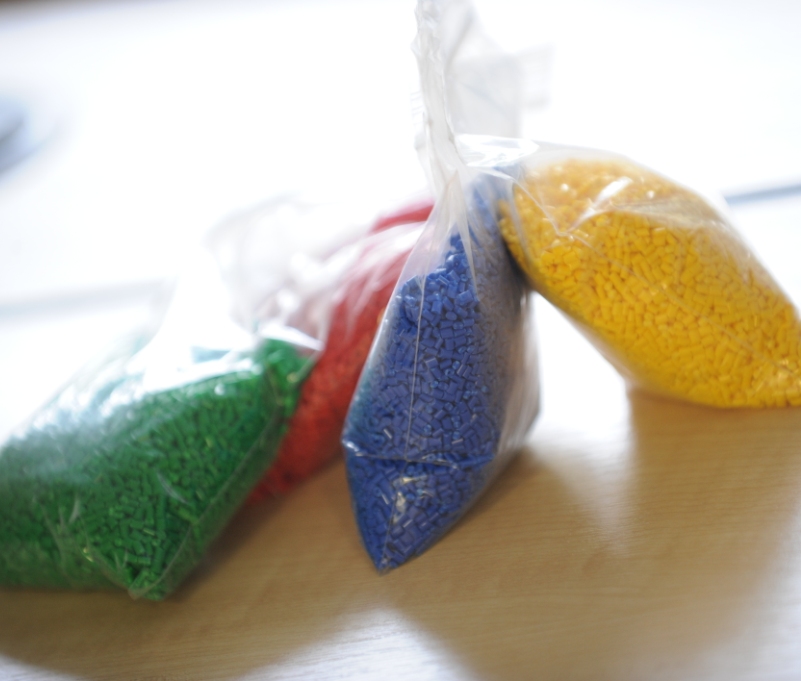
CONCLUSION
Whatever your application, reprocessed plastic may offer a solution. Of course, not every polymer is available in a reprocessed form and it may not be suited to your particular application. But the next time you have a new project, or even an existing project that needs cost reduction, do not dismiss recycled plastics. Rutland Plastics is happy to help you with any injection moulding requirement you may have. Check with us to see if reprocessed plastics may work in your injection moulding application.
Rutland Plastics has the Environmental Management Standard ISO14001:2004
Information about Bioplastics

